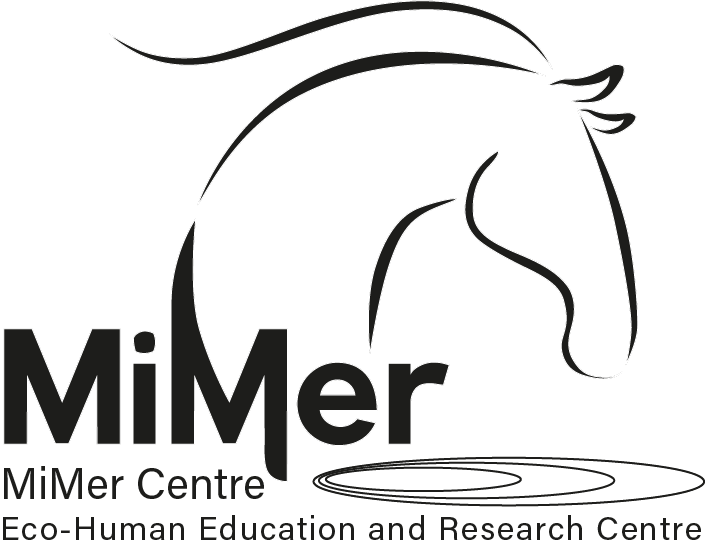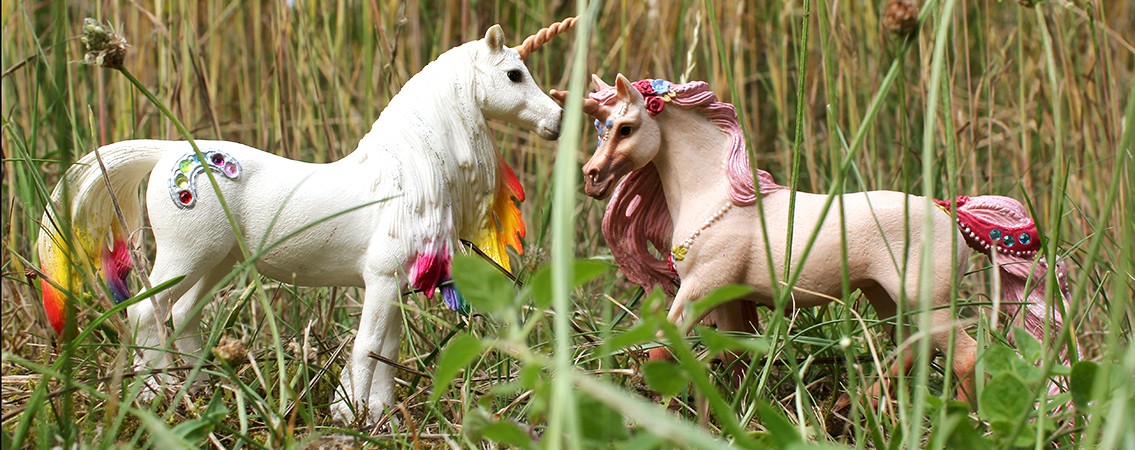Unicorn Assisted Therapy
Or why we work with HORSES in EAP…
*Trigger warning – to be read with personal and professional self-distance*
Unicorn Unlimited is offering Unicorn Assisted Therapy (UAT) to everybody who wants to be healed. Come and meet our unicorns, and we promise you some magical and unforgettable moments. They will find what is broken in you and mend it. This they do by being in resonance with our ancestors, their ancestors, the earth, the universe, all spirits and all shamanic power that is "out there", and everything else magical and unexplainable. They will also send heart waves your way and cohere your energy, which is another healing power they will radiate towards you. It will make you and the unicorns vibrate at the same cosmic frequency.
The unicorns always know what you need and will give it to you. These experiences will forever change you and until eternity. This is in fact the reason why unicorns were put on this earth – to heal and save humanity.
Therefor therapist, psychologists, or any other mental health professionals are not needed in this work, because it is the unicorns that heal you and guide you. But there will be humans present to make sure you connect with a unicorn. The connection is essential from the beginning – so you learn what methods there is to connect, because unfortunately you can not bring the unicorns with you home, but you will learn the unicorn connection model. You can also buy the book, the magic accessories and if you want to you can easily become a UAT provider yourself, or even a trainer in UAT, in this way, you guarantee you will always be connected, and that you can assist all other beings in how to connect.
Come and join us for a weekend and experience and learn it all – and be healed from your feet and up. No words are needed, you can leave your mind at home, this is a bottom up all magical modality which will reset all your systems and create a perfect balance in you.
Our unicorns live in small, but cute stables and are let out every day to stand in their pasture and are fed proper factory-made unicorn feed. We care a lot about our unicorns' welfare, and therefor we provide them with magical massages and touches after each session. If someone is coming to meet them, who has severe mental health issues, we will consider to also give our unicorns a cleansing crystal and sage cleaning ritual afterwards. Just in case, so they don't get sick by these people.
Welcome to contact Unicorn Unlimited to book your weekend! We'll meet in the rainbow field of magic!
The Horse
My aim is not to offend anyone. I am by exaggerating and also by joking a bit trying to raise the awareness of how we objectify and instrumentalize horses in EAP, by putting labels on them, by telling what they can and can't do, by interpreting their "messages" to us humans, by thinking that what we want and appreciate is what they want and appreciate, etc. For me, this is a great danger in our field. For both horses and clients. If the field becomes about how we see horses, about what we believe a horse is and can contribute with, based on intuition, wishes, lacking knowledge and lacking self-awareness, we are going to mess up.
By labeling the horse as a healer (therapist, shaman, teacher…) we take away from both the horse, the client and the provider(s). We are unnecessarily complicating it, the therapist is a therapist, the horse is a horse, the client a client, and the (preferably present) equine professional is an equine professional. If all work together, as a team, the client will be empowered, find his/her own solutions, his/her own way of doing things, find out who he/she is, wants in life etc, etc…
We are also adding things that are not there, to the horse and to the horse-human relationship. Both taking away what is there, and adding what is not there, will add to the confusion about what EAP is.
EAP is a psychological treatment modality, a tool for therapists, to use to help clients (the horse is not a tool, but EAP is).
I do not have all the answers to why working with horses in EAP is so effectual. That is why I am doing research on it, that is why I keep on reading, keep on educating myself, keep on asking questions, keep on looking for new angles, new perspectives, keep on evaluating and trying practices and theories out. This has turned me into an equine-human interaction nerd, within the field of EAP. To understand the interaction, I early on figured out that we need more knowledge, more research on horses. Because how can we say something about why the client benefits from EAP, what role the horse plays in EAP, if we do not know who the horse is? And by that, I refer to the horse as a horse, but also the horse as A horse, a specific horse, an individual, a subject, an agent.
I am briefly going to share some of my thoughts on why we work with horses, what theories and hypotheses I use and why I think we need to look at this to be able to formulate what ethical work means in this field.
I am repeating myself from former posts and articles, but as I see it, we foremost need:
- More knowledge about horses – knowledge about them as biological, cognitive, emotional and social beings.
- More knowledge about horse-human interaction (what is it with this particular cross-species interaction that is helpful to clients)
- Self-awareness!
- A will to formulate ethics, practice, research questions, theoretical frameworks, more common language/terminology – focusing on what is, and not on what we wish for (wished for outcomes), with the client and the horse in the center.
When you subscribe to the blog, we will send you an e-mail when there are new updates on the site so you wouldn't miss them.


Comments